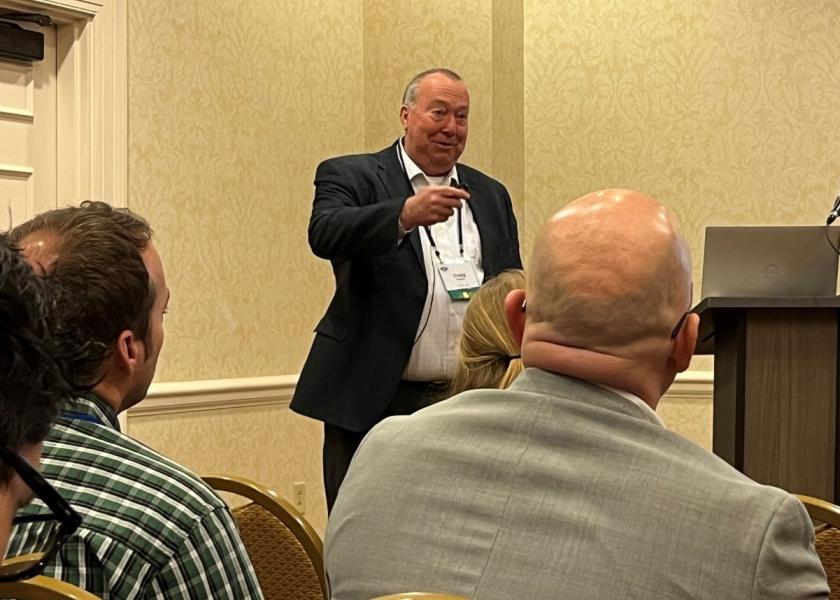5 Practical Ideas Pork Producers Can Borrow from the Egg Industry

The laying hen industry shares many similar risks to the pork industry regarding the need to prevent the introduction of disease agents onto farm operations. When highly pathogenic avian influenza (HPAI) struck the commercial poultry industry in both 2015 and 2022, the result was millions of birds that required depopulation and disposal.
Versova general manager for cage-free production Craig Rowles, DVM, said the primary method of preventing this risk is to invest time, money and effort into biosecurity measures. As a former pork producer himself, Rowles shared at what egg producers are doing now that swine producers could benefit from trying (if they aren’t already doing) in their own operations.
Layered approach
“It’s everyone’s responsibility to keep flocks and herds from becoming infected by focusing on biosecurity they can control on their premises,” Rowles explained during his presentation at the American Association of Swine Veterinarians annual meeting in Nashville, Tenn.
That’s why he believes it’s critical to incentivize good behaviors on the farm. It’s also why Versova has invested millions in creating a lasting, comfortable and appealing environment within their operations to keep people inside.
“The most basic principles for biosecurity remain the same in layers as pigs. The most important aspect of those principles is to maintain the line of separation,” he shared. “The lowest hanging fruit of biosecurity is to prevent disease from being ‘walked’ into a farm.”
Perhaps one of the biggest differences between swine and layer operations is the size and scope of the operations.
“It is not unusual for a layer farm to have 150 to 200 employees,” Rowles says. “We are heavily investing in infrastructure to make the process easy for employees to operate.”
He says it’s important to think of ways to keep people inside. Rowles encourages systems to think about the reasons why employees leave the building and work to find solutions to keep them inside. Here are five practical examples he shared from the egg industry to help make biosecurity easier to implement on farms.
1. Invest in quality shower facilities.
“Make sure you have good shower systems so the last person in gets a hot shower,” Rowles says. Versova has invested in in-floor heat, so floors dry out in the winter. They use hotel industrial-grade fan systems to exhaust the humid air out. Humidistats in the shower run the fan until the humidity is brought down.
2. Prioritize the break room.
Provide employees with a quality break room. At Versova, their break rooms have outside windows, nice floors, good chairs and TVs to deliver coaching/teaching or to be able to watch the news during breaks.
3. Incorporate central kitchens.
Although a nice kitchen may not be needed for a biosecure facility, it does incentivize people to work for us, Rowles explains. “We want to keep them inside the facility as opposed to going out to get their lunch,” he adds.
4. Keep outside work outside, and inside work inside.
Versova farms have vibrators on every bin that can be controlled by workers inside when feed bridge events occur. He says this works about 80% of the time and when it doesn’t, there are designated people who work outside who can go check problems on the outside.
5. Set up a perimeter buffer.
Put fencing around the entire operation to keep wild animals out, he adds. Rolling automatic gates are also helpful to help control traffic in and out of the farm.







